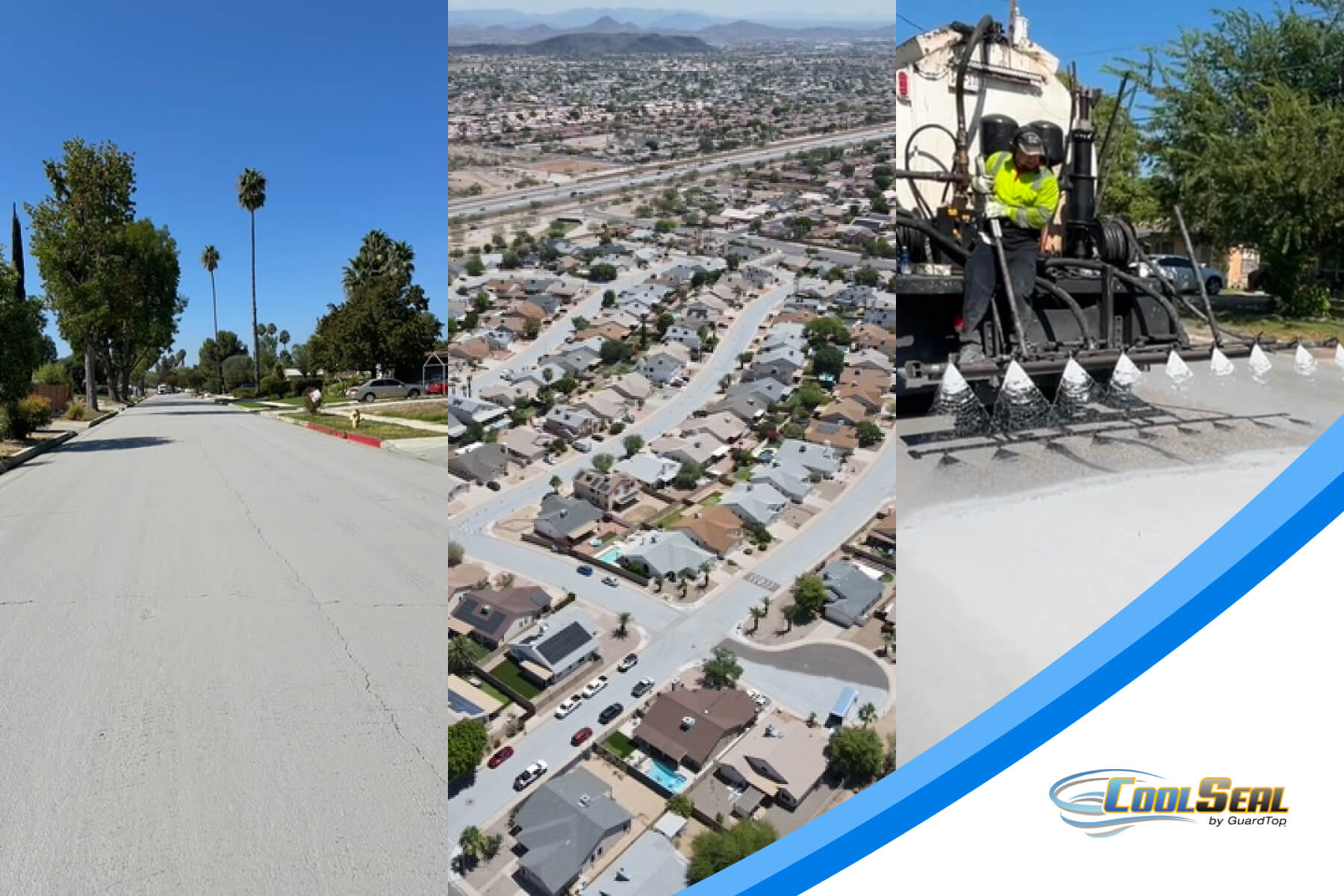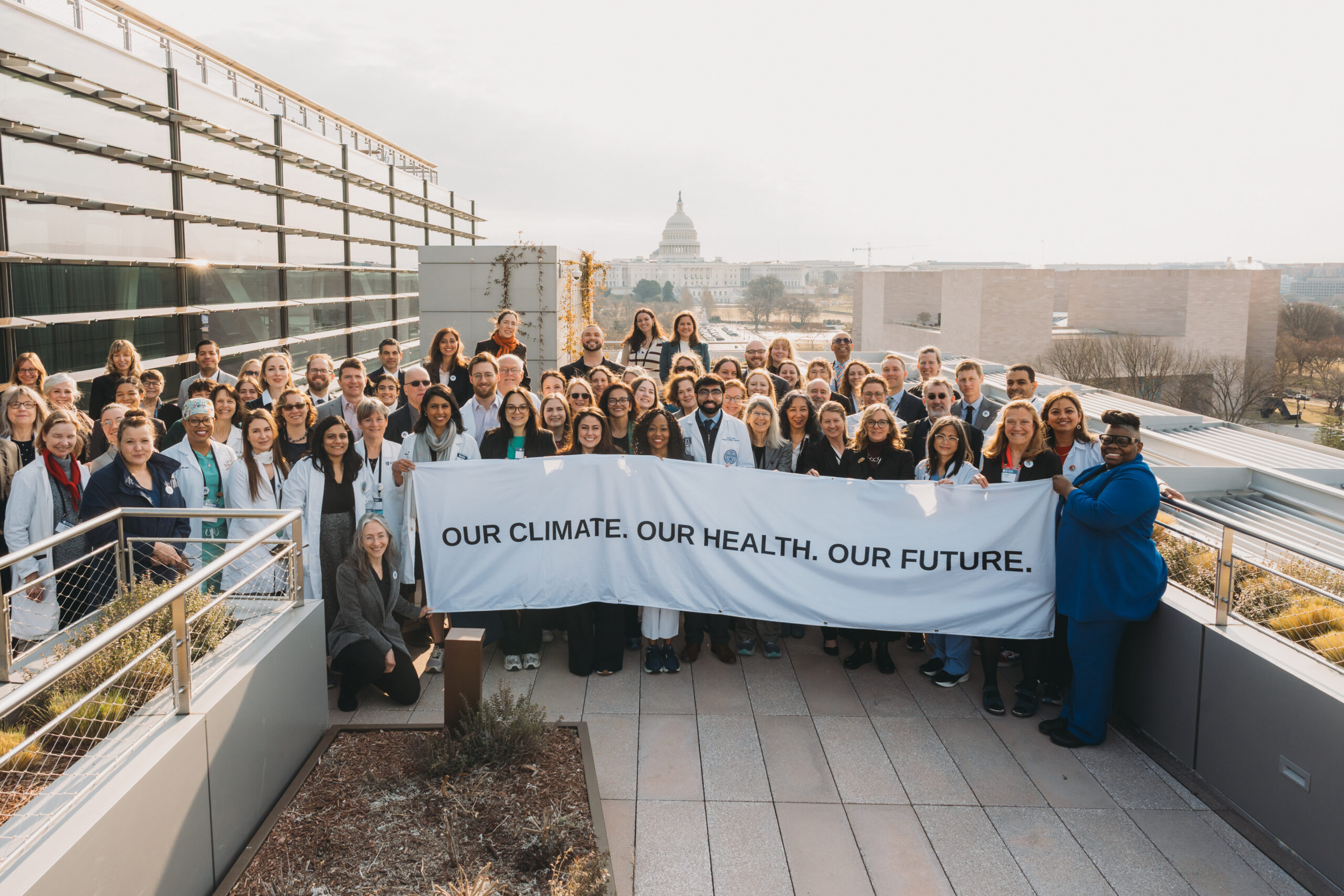As featured by Smart Cities Dive:
Dive Brief:
- Recent research from cities and academic institutions suggests that the implementation of cool pavement coatings and related technologies can help lower urban heat island effects locally while also providing a broader climate change benefit. Questions remain on whether people actually feel cooler in the presence of these materials and the longevity of their benefits.
- The city of Phoenix, in partnership with Arizona State University (ASU) researchers, last week presented lessons from a cool pavements pilot program that began in 2020. After implementing reflective cool pavement coatings in eight city locations, the team found that the material resulted in lower surface temperatures at all times of the day compared to traditional asphalt counterparts. Most starkly, around noon and in the afternoon cool pavements averaged temperatures nearly 12 degrees Fahrenheit cooler than traditional asphalt.
- Separately, the Massachusetts Institute of Technology Concrete Sustainability Hub (MIT CSHub) presented on its analysis of the potential for cool pavements in Phoenix and Boston during a webinar Thursday. While the study suggested use of cool pavements in these cities could lead to air temperature and greenhouse gas emissions (GHG) reductions, the researchers expressed the importance of considering different neighborhoods' characteristics and other climate impacts from the technology.
Dive Insight:
After the U.S. experienced a summer of record-breaking high temperatures, the risks and difficulties that heat poses for communities is top of mind for many city officials. Phoenix is considered the hottest U.S. city. In June, it experienced six consecutive days when the high temperature was at least 115 degrees F. But this year's heat waves also affected parts of the country less accustomed to long stretches of triple-digit temperatures, namely the Pacific Northwest.
Paved surfaces in Phoenix cover 40% of the city's urban land area, serving as a primary contributor to the urban heat island effect. The idea behind the cool pavements rollout, which entailed applying a water-based treatment called CoolSeal to asphalt, was to have lighter-colored pavement that reflected more of the incoming sunlight, therefore absorbing less heat. On standard streets, night temperatures can increase when much of that heat is released.
Among the lessons from the first year of the program was that optimal locations for implementation include open, unshaded lots and low-rise residential areas where sunlight can be reflected out, said Jennifer Vanos, assistant professor in the School of Sustainability at ASU, during last week's presentation. Conversely, areas with shade may not benefit as much.
Additionally, athletic courts or parks where people are spending time during the middle of the day may not be the best setting, as people may feel that heat. An earlier pilot program in Los Angeles found that while the material led to lower surface temperatures, with pavement doing a better job reflecting heat it's possible humans were then absorbing it.
In a separate webinar on Thursday, MIT CSHub Co-Director Randolph Kirchain noted that cool pavements are a tool that can complement other heat effect mitigation strategies, each of which have shortcomings. Adding trees, for instance, is highly effective but benefits take time to build. Adding cooling centers can also help but come with their own carbon footprint.
The recent MIT research considered different types of pavements and concrete, and considered other features besides color such as surface texture that could have climate impact. Rough pavement, for instance, can cause a vehicle to expend more energy as it moves up and down over grooves as opposed to being able to travel more efficiently on smooth pavement.
Moving forward, one area that MIT researchers aim to explore more is "how low-carbon concrete mixtures and grid decarbonization may change which cool paving alternative is preferred over time when seeking to minimize life cycle emissions," according to MIT CSHub Communications Coordinator Andrew Logan.
As for the Phoenix-ASU research team, recommendations and next steps following the first-year findings include conducting longer-term testing to see how pavement properties potentially change as it ages.
This article was originally published by Smart Cities Dive. Read the full article here.





